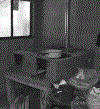ERS/ATS workshop report on respiratory health effects of household air pollution
- PMID: 29301918
- PMCID: PMC7418845
- DOI: 10.1183/13993003.00698-2017
ERS/ATS workshop report on respiratory health effects of household air pollution
Abstract
Exposure to household air pollution (HAP) from solid fuel combustion affects almost half of the world population. Adverse respiratory outcomes such as respiratory infections, impaired lung growth and chronic obstructive pulmonary disease have been linked to HAP exposure. Solid fuel smoke is a heterogeneous mixture of various gases and particulates. Cell culture and animal studies with controlled exposure conditions and genetic homogeneity provide important insights into HAP mechanisms. Impaired bacterial phagocytosis in exposed human alveolar macrophages possibly mediates several HAP-related health effects. Lung pathological findings in HAP-exposed individuals demonstrate greater small airways fibrosis and less emphysema compared with cigarette smokers. Field studies using questionnaires, air pollution monitoring and/or biomarkers are needed to better establish human risks. Some, but not all, studies suggest that improving cookstove efficiency or venting emissions may be associated with reduced respiratory symptoms, lung function decline in women and severe pneumonia in children. Current studies focus on fuel switching, stove technology replacements or upgrades and air filter devices. Several governments have initiated major programmes to accelerate the upgrade from solid fuels to clean fuels, particularly liquid petroleum gas, which provides research opportunities for the respiratory health community.
Copyright ©ERS 2018.
Conflict of interest statement
Conflict of interest: None declared.
Figures




References
-
- World Health Organization. Household air pollution and health. Fact sheet 292 www.WHO.int/mediacentre/factsheets/fs292/en/ Date last accessed: February 15, 2017 Date last updated: February 2016.
-
- Kim KH, Jahan SA, Kabir E. A review of diseases associated with household air pollution due to the use of biomass fuels. J Hazard Mater 2011; 192: 425–431. - PubMed
-
- Perez-Padilla R, Schilmann A, Riojas-Rodriguez H. Respiratory health effects of indoor air pollution. Int J Tuberc Lung Dis 2010; 14: 1079–1086. - PubMed
Publication types
MeSH terms
Substances
Grants and funding
LinkOut - more resources
Full Text Sources
Other Literature Sources
Medical
